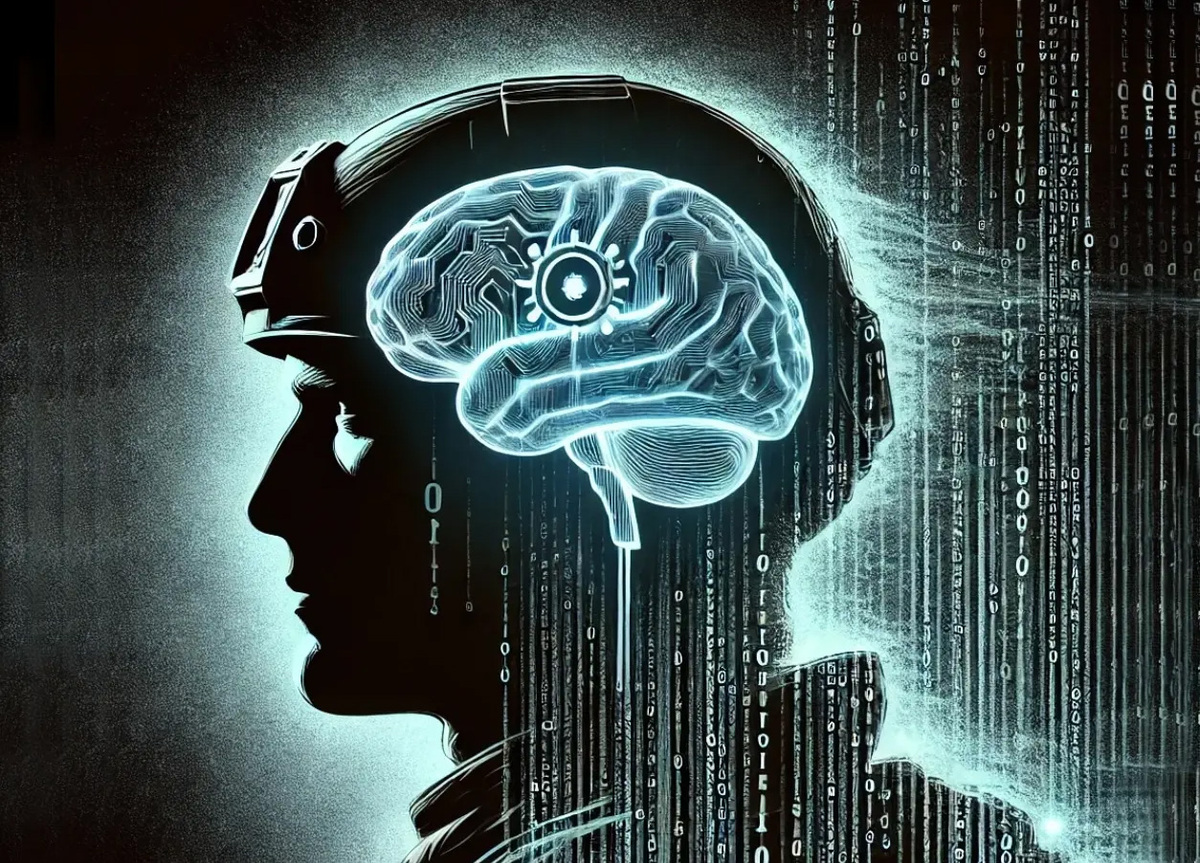How will neurotechnology transform the military sector?
Neurotechnologies, particularly brain-computer interfaces (BCIs), have the potential to rewrite the rules of warfare and global security. Let's take a look together at how neurotechnologies will transform the military sector.

Although there is not much material describing the future use of neurotechnology in the military sector, a study published in 2022 by the prestigious Cambridge University Press, which analyses possible scenarios for the commercial and military deployment of neurotechnology in the US and China, is certainly worthy of attention. The authors of the study, Margaret Kosal and Joy Putney of the Georgia Institute of Technology, provide a detailed assessment of the geopolitical, ethical and technological aspects associated with the development of this breakthrough technology.
What does this study highlight most?
1. Geopolitical competition between the US and China
- The study identifies the US and China as major players in military neurotechnology.
- The United States benefits from a technological lead, large-scale investment and the innovative approach of start-ups and universities.
- China, on the other hand, benefits from centralised management of research and rapid deployment of innovations into practice. Its society is more willing to adopt new technologies, which can accelerate their implementation.
2. Potential arms race
- The race to develop neurotechnologies could significantly affect the global balance of power.
- Neurotechnologies such as BCI could offer military advantages such as faster decision-making, more effective coordination, and greater soldier resilience.
- The authors warn that a lack of regulation could lead to the misuse of these technologies and escalate tensions between major powers.
3. Ethical and legal challenges
- The study highlights the need for international legal and ethical frameworks.
- Without such regulations, neurotechnologies could undermine fundamental human rights, including individual autonomy.
- Regulations should prevent the use of these technologies to manipulate, monitor or suppress civil liberties.
What applications are waiting for us?
Although this study does not elaborate much on specific applications, based on my broader research in the field of neurotechnology, I will outline some scenarios and visions of what such an application of neurotechnology in the military sector could look like. At the moment, these are rather speculative visions, which may, however, take on realistic contours over time.
1. Rehabilitation and reintegration of wounded soldiers (expected deployment: 3-5 years)
Neuroprostheses and nervous system stimulation are already at an advanced stage of development. Wounded soldiers could regain motor skills or better manage post-traumatic stress thanks to neurotechnologies. This technology could find applications within a few years.
Examples:
- Neuroprostheses: Soldiers with amputations could get advanced bionic limbs that are naturally thought-controlled thanks to neurotechnology
- Treating PTSD: Therapy using nervous system stimulation could help manage post-traumatic stress
- Advances in neurorehabilitation: neurotechnology could restore mobility even after severe spinal cord injuries, revolutionising not only military medicine
2. Monitoring of physical and psychological condition (expected deployment: up to 7-10 years)
One of the most likely apps to revolutionize soldier health monitoring. While it is already possible to monitor basic parameters such as heart rate, adrenaline levels or fatigue using wearable devices, neurotechnology will allow a much deeper view of a soldier's condition, including monitoring neurophysical signals such as brain activity. The technology will be able to measure not only physical condition, but also emotional and psychological responses, such as reactions to stress or anxiety, in real time.
Examples:
- Advanced psychological monitoring: neurotechnology will provide data on how the soldier reacts to challenging situations, how he copes with psychological stress and how his brain adapts to changes in the environment.
- Interactive responses: based on these signals, it will be possible to implement automatic stimulation techniques to maintain concentration or calm down, which is not possible with traditional technologies.
This combination of physical and psychological monitoring in real time will allow commanders to better plan and adapt combat operations, reducing the risk of exhaustion or psychological problems for troops.
3. Unmanned operations (expected deployment: within 10-15 years)
Thanks to neurotechnology, soldiers will be able to control drones and robots with thoughts alone. This technology will not only make operations, but it will also bring entirely new capabilities that current controls via controllers or keyboards do not offer.
Examples:
- Speed of response: thoughts bypass the lengthy process of physically entering commands. Control can be almost instantaneous, which can be crucial in crisis situations, for example when averting an unexpected attack.
- Linking to autonomous functions: neurotechnology could also enable advanced autonomous functions, where machines respond to the soldier's intent without the need to specify individual steps in detail. For example, a drone could evaluate the thought instruction "explore the area" and autonomously determine the optimal route.
4. Simulation and training (expected deployment : up to 15-20 years)
Neurotechnology could replace physical training polygons with realistic simulations of combat situations directly in the mind. Soldiers could thus train crisis response in a safe environment at minimal cost.
Examples:
- Neurotechnology-driven virtual reality: realistic simulations of combat situations where the soldier experiences a crisis "in his mind", which improves stress responses.
- Based on neurotechnology data, training can be personalized according to the weaknesses and strengths of individual soldiers.
- Cost Reduction: Significant financial reduction by replacing physical polygons with virtual ones.
5. Increasing cognitive abilities of soldiers (expected deployment: up to 15-25 years)
Future neurotechnologies may turn soldiers into "superthinking machines" that can analyse complex situations in fractions of a second.
Examples:
- Accelerated decision-making: soldiers equipped with neurotechnology will be able to process data from drones, satellites and sensors in real time. For example, during combat, they can instantly identify enemy threats and design optimal tactics.
- Mind projection: instead of physical displays, the implants will allow soldiers to see digital maps, instructions or battle orders right in front of their eyes - or rather, in their minds.
- Emotion and stress detection: using neurotechnology, stress, fear or fatigue levels could be monitored in real time. The technology could automatically modulate brain activity and ensure that the soldier remains calm and fully focused even in crisis situations.
6. Mental influence on opponents (expected deployment: up to 20-30 years)
One of the most controversial and remote options. Purely theoretically, neurotechnology could be used to manipulate the emotions, moods or decision-making of adversaries. For example, electromagnetic stimulation could be used to lower an enemy's morale or influence their strategy.
Examples:
- Affecting mood: precisely targeted electromagnetic waves could manipulate areas of the brain responsible for emotions, such as the amygdala. This could induce feelings of fear, panic or, conversely, apathy, thereby significantly reducing the combat effectiveness of enemy troops.
- Virtual projection: the use of neurotechnology could allow the manipulation of enemy perceptions. Imagine, for example, sending images, sounds, or even smells directly into an adversary's brain, which could lead to the perception that he is in danger or that his mission is unfeasible.
- Disinformation: precisely targeted manipulation of memory or decision centers in the brain could confuse the enemy, for example, so that he misinterprets orders, forgets key details, or makes a mistake in strategy.
It is important to stress here that this particular scenario is highly speculative, but its fulfilment would nevertheless mark a radical shift in the approach not only to psychological operations.
Ethical issues and risks
Neurotechnologies bring many positive changes, but also significant ethical challenges. In the future, they may erode human autonomy or be used for manipulation and oppression.
It is therefore crucial to develop robust legal and ethical frameworks to ensure that these technologies are not misused. Once neurotechnologies begin to be deployed on a mass scale, their implementation will need to be carefully monitored to ensure that they comply with international standards and legal principles.
Initial efforts to establish legal and ethical frameworks are already underway. For example, the scientific section of UNESCO is now working on a muster that should result in the first global neuroprotection this year.
Neuroprince is a field that bridges neuroscience and law and is concerned with protecting the rights of individuals from the misuse of neurotechnologies. It aims to ensure the ethical and responsible use of technologies that interact with the human brain and nervous system.









